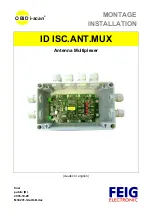
AX-C708
1. Introduction
Warning
Read“Safety Information”before using the meter. ProcessMeter ( referred to as “the meter ”)is a handheld,
battery-operated tool for measuring electrical parameters. It has all the features of a digital multimeter, it
could also output signals of direct voltage, current and frequency as well.
If the meter is damaged or something is missing, contact the place of purchase immediately. Contact a
distributor for information about DMM (digital multimeter) accessories.
2. Safety Information
The meter complies with IEC61010.1-93 Overvoltage CategoryII.Use the meter only as specified in this
manual, otherwise the protection provided by the meter may be impaired. A Warning identifies conditions
and actions that pose hazard(s) to the user; a Caution identifies conditions and actions that may damage
the meter or the equipment under test; an Attention identifies symbols of the operation and explanations
of the features. International symbols used on the meter and in this manual are explained below.
Warning
To avoid possible electric shock or personal injury:
• Do not use the meter if it is damaged. Before using the meter, inspect the case. Look for cracks or
missing plastic. Pay particular attention to the insulation surrounding the connectors.
• Make sure the battery door is closed and latched before operating the meter.
• Remove test leads from the meter before opening the battery door.
• Inspect the test leads for damaged insulation or exposed metal. Check test leads before using the
meter.
• Do not use the meter if it operates abnormally. Protection may be impaired. When in doubt, have the
meter serviced.
• Do not operate the meter around explosive gas, vapor, or dust.
• Use only type AAA batteries, properly installed in the meter case to power the meter.
• When servicing the meter, use specified replacement parts.
• Use caution when working above 30V ac rms, 42V ac pk, or60V dc. Such voltages pose a shock hazard.
• When using the probes, keep fingers behind the finger guards on the probes.
• Connecting the common test lead before connecting the live test lead. When disconnecting test leads,
disconnect the live test lead first.































